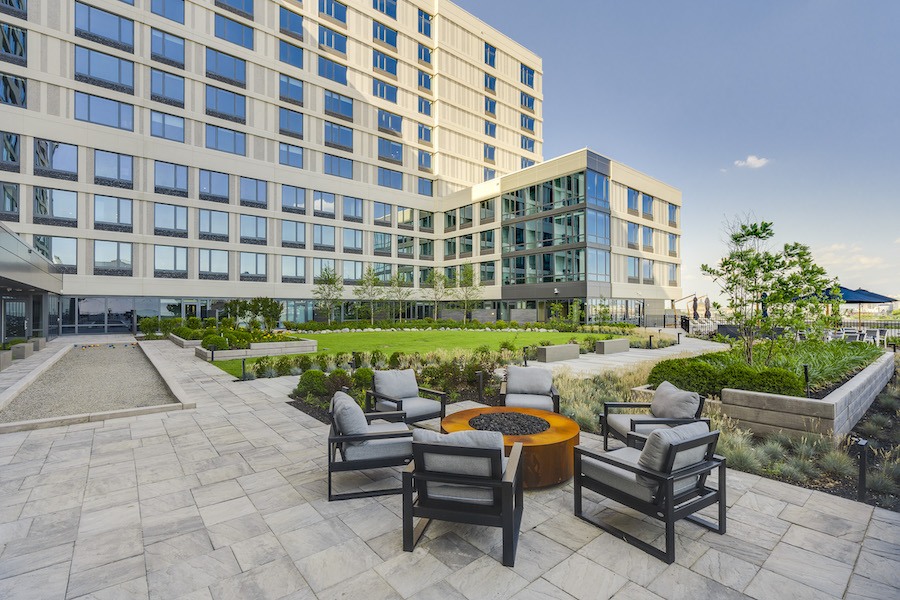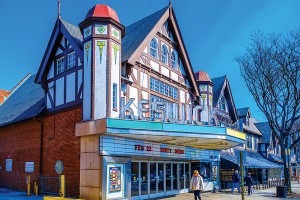The 3 Biggest Developments in the Greater Philly Housing Market This Year
Still-torrid sales, scads of new multi-unit buildings and house prices that may be climbing beyond the reach of many.

The length of time houses go from “for sale” to “sold” in Greater Philadelphia remained astonishingly short in 2021, and that plus low inventory has led to rapidly rising prices — and worries that housing here may become unaffordable to the broad middle of the market. | Getty Images stock photo
2021 had to be better than 2020, didn’t it?
And even though everyone has pulled out their worry beads now to fret over the Omicron COVID variant, inflation, or both, it was. Even though it didn’t fly as high as it did in 2019, 2021 was another banner year for real estate and development hereabouts. Here are my picks for the top development and real estate happenings in the Greater Philly housing market in 2021.
1) The torrid sales pace begins to cool down, but prices continue their steeper climb.
The COVID lockdown of early 2020 turned out to be a speed bump for the fast-moving residential real estate market in the greater Philadelphia region. And for most of this year, sales continued at a rapid clip, but signs of a slowdown have begun to appear. November 2021 sales data from BHHS Fox & Roach Realtors show the sales pace in the eight-county core Philadelphia metropolitan market was off by 2.3 percent from last year but up 20.8 percent from the year before the pandemic hit.
And houses flew off the shelves even faster than they did in both 2019 and 2020: Houses in the region took only 27 days to sell on average, and it would take only 1.4 months to sell every house on the market in November — 30 percent less inventory than in 2020 and 61 percent lower than in 2019. But those inventory and days-on-market figures are up slightly from where they were during the summer. Average days on market rose slightly, from 21 in August, and that month’s supply of homes was also up by 0.1 month’s worth from August. Drexel University real estate guru Kevin Gillen wrote at the end of the second quarter of the year that sales were showing signs of softening, in part due to the low inventory of homes for sale.
That low inventory, however, continues to contribute to sharp rises in house prices. The median house sale price in the eight-county market crossed the $300,000 threshold in November. The $310,000 median sale price is 10.7 percent above last November and 25.2 percent above 2019. The average sale price rose 10.3 and 28.5 percent, respectively, to $375,169.

The 478-unit Broadridge, which welcomed its first tenants this fall, is the largest one-building rental apartment community in the city. | Photo courtesy RAL Properties
2) Multifamily construction spreads outward from Center City.
For some years now, apartment buildings and condominiums, both new and converted from older office buildings, have accounted for the overwhelming bulk of the growth in Center City’s housing stock and residential population. But in the last year or so, they have begun to make up a greater share of new housing beyond the center.
The biggest developments to come on line this year included two in West Poplar: Broadridge, RAL Companies’ 478-unit rental apartment building where Broad Street, Ridge and Fairmount avenues meet, and The Poplar, Post Brothers’ conversion of a historic Strawbridge & Clothier warehouse into 285 apartments five blocks to Broadridge’s east. South Kensington just north of Girard Avenue now boasts several large multi-unit rental buildings debuted in the last year, and even neighborhoods further out have gotten a piece of the action: For instance, two smaller five-story apartment buildings opened their doors on Germantown Avenue in Mt. Airy this year as well.
Among the larger projects set to open their doors in the next year or so: LVL North, Alterra Property Group’s largest modular apartment building to datse, at Broad and Spring Garden streets, and Piazza Terminal, the first new-from-the-ground-up project for Post Brothers, just up the street from their Piazza complex in Northern Liberties. The city’s two tallest residential condos, The Laurel on Rittenhouse Square and the Arthaus on the Avenue of the Arts, should also welcome their first residents in 2022.

Philadelphia’s large stock of rowhouses has long been key to the city’s housing affordability. But the recent runup in prices has put more of them beyond the reach of a family making the city median household income. | Photo: Julia Lehman Photography
3) Affordability becomes more of an issue.
Gillen’s Philadelphia Housing Affordability Index soared to a new all-time high this summer, when the median house price in the city rose to 4.5 times the median household income. That means unaffordable housing is becoming not only the result of lack of income, as it is for about one in every four Philadelphians, but also the result of soaring house prices. “The fact that price growth has exceeded household income growth in recent years would also seem to indicate that more homes are becoming less affordable (or even unaffordable) to an increasing number of Philadelphia households,” Gillen wrote in his summer 2021 market report.
This has led to concern being voiced about the effect of new construction on house prices in parts of North and West Philadelphia especially. But as of now, there has been no concerted effort to address housing affordability for the broad middle of the city’s population. However, one bill whose aim is to raise money for a host of housing assistance and construction training programs, including first-time homebuyer assistance, affordable housing construction, basic systems repair for homeowners and various forms of rental housing assistance, became law at the beginning of this year: the Development Impact Tax.
This tax, which will be a fixed fee on new construction and 1 percent of the cost of alterations and renovations, will be imposed starting Jan. 1st. That’s also the date that the 10-year property tax abatement for new construction and improvements gets cut in half by turning it into a sliding scale that shrinks over each of the 10 years. The Building Industry Association of Philadelphia helped shape the impact tax but opposed the abatement cut; whether its reduction will dampen new construction activity going forward remains to be seen.
Updated Jan. 3rd, 2022, 1:46 p.m., to correct the name of Broadridge’s owner-manager, RAL Companies. We had identified it originally as RAL Properties.


